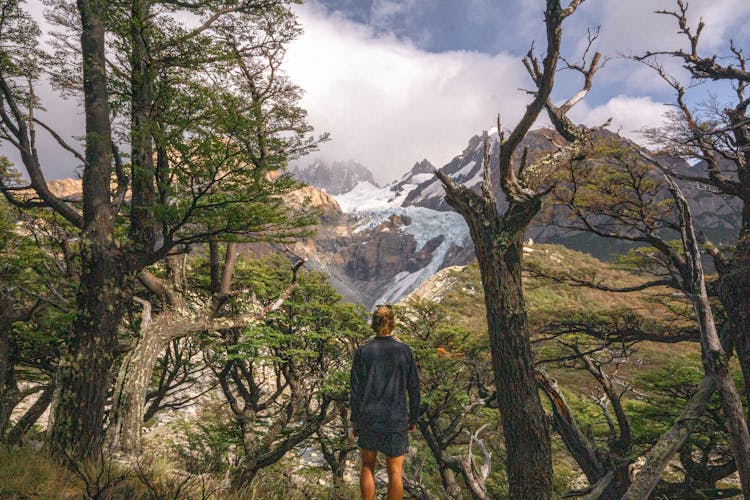All Categories
Featured
Table of Contents
Safety First on Mountain Trails
TL;DR Summary- 🌄 Plan your hike and inform others.
- 🏃 Know your limits and trail difficulty.
- ☁️ Prepare for changing weather conditions.
- 🎒 Pack the essentials for safety.
- 🌞 Protect yourself from the elements.
- 🚶 Stay safe on the trail and be prepared.
Embarking on a mountain trail hike is an exhilarating experience that connects you with nature while providing physical and mental benefits. However, it is also imperative to prioritize safety. Much like any adventure, preparation can make a significant difference. Before setting out, the first step is to plan your hike carefully. Map out the route, and consider the terrain, weather, and your hiking skills. Inform a friend or relative about your plans, including your expected return time and any specific hazards you might encounter. This not only ensures someone is on the lookout for your safety, but it also provides peace of mind knowing that should anything unexpected happen, someone is prepared to act. Hiking is as much about enjoyment as it is about security.
Assessing your limits is equally vital. Hiking is accessible, but be smart about trail choices that match your physical condition and experience level. Select trails that fit your skills and consider any medical issues that could impact your abilities. Recognizing and respecting your limits can prevent accidents and ensure an enjoyable experience. Don’t hesitate to turn back if you realize the trail is too difficult.
The weather can change rapidly when you’re out on the mountains. Always check the forecast before heading out and consult park rangers for potential weather changes. Being prepared for inclement weather, such as thunderstorms or heavy rain, can drastically reduce risk. Avoid high and exposed areas during thunderstorms, as lightning can pose a significant threat. Wear appropriate clothing and pack layers to adapt to temperature fluctuations; it’s better to be too warm than too cold when hiking.
When it comes to equipment, packing the essentials is fundamental for safety. Carry with you the 10 Essentials: a first aid kit, navigation tools (map and compass), sun protection (sunscreen and hat), insulation (extra layers), illumination (headlamp or flashlight), fire starters, a repair kit, adequate nutrition, hydration supplies, and an emergency shelter. Each of these items plays a role in ensuring that any unforeseen circumstances are manageable.
Protection from the sun's harmful rays is not just an option; it’s a necessity. Use sunscreen with an SPF of at least 30 to protect your skin. Don’t forget to wear sunglasses and a hat; this will help shield your face and eyes from harsh sunlight. Staying hydrated is crucial as high altitude and strenuous activity can lead to quick dehydration. Opt for fluids that contain electrolytes, and refrain from ingesting caffeine or alcohol, as they can exacerbate dehydration. Regular breaks in shaded areas are wise and can help you avoid heat-related illnesses. If you begin to feel dizzy, fatigued, or nauseous, it’s time to find a cool spot to rest and hydrate.
Staying safe while on the trail is paramount. Always stick to marked trails and resist the temptation to venture off the path. This not only helps preserve the environment but also minimizes the risk of getting lost or injured. Edges of trails can be precarious; avoid rapidly flowing water and slippery slopes, as missteps can lead to serious injuries. Bugs can be a nuisance, so it’s wise to use bug repellent, consistently check for ticks, and watch out for mosquitoes that may carry diseases.
In the event of an emergency, remaining prepared is crucial. Leave a detailed plan with someone who isn’t on the hike, including specific trails, expected return times, and contact information. Having a fully functional cell phone can be a lifesaver, but knowing how to use a compass is invaluable—in case you find yourself off-grid. Always be prepared to signal for help and remember to convey essential details to emergency responders if the situation becomes dire.
Exploring the stunning vistas and breathtaking landscapes of mountain trails can be a rewarding journey. By prioritizing preparation and safety at every turn, you can minimize risks and maximize enjoyment on your adventures. Equip yourself with knowledge, checklists, and check the latest hiking publications or guides, such as the Great Smoky Mountains National Park Map or Best Easy Day Hikes Rocky Mountain National Park. Preparation transforms a hike into a remarkable experience.
What should you consider before selecting a mountain trail?
What essentials should I pack for a mountain hike?

Latest Posts
Uniting for Social Justice: First Unitarian Universalist Society's Impact
Best Ways to Store Bread
Mastering the Dispute Process: Clearing Your Credit Report